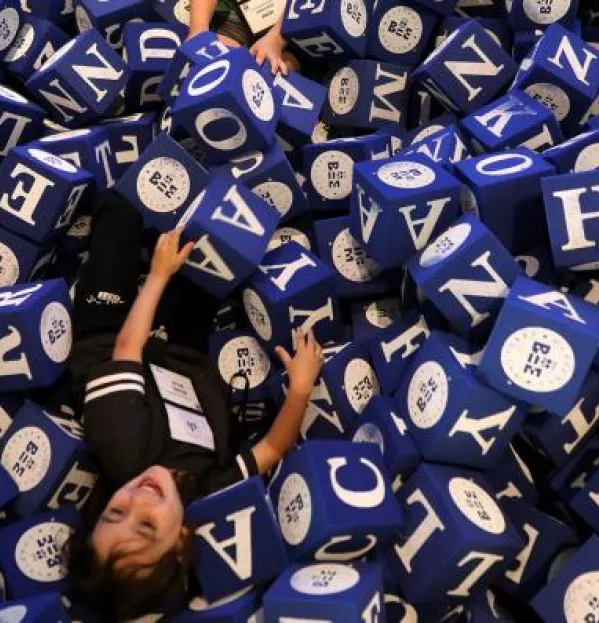- Home
- Teaching & Learning
- Early Years
- Why we should teach spelling patterns to pre-readers
Why we should teach spelling patterns to pre-readers

I am terrible at remembering people’s names.
The information goes in, I think I have it, then as soon as it is needed I find that it has packed up and shifted off elsewhere without a word of warning.
It got me thinking: how might we better teach children (and adults) to remember new words?
Quick read: 13 things you need to know about phonics
Quick listen: ‘Phonics is crucial - even for those who won’t ‘get’ it’
Want to know more? Is the Japanese writing system the key to teaching better maths?
I noticed that teachers and speech and language therapists often write a word on the board (or, these days, present it on a smartboard) when they explain a new word. I suspected that most, if not all, teachers were doing this.
So in 2012, we formally observed approximately 150 literacy or English lessons from Year 2 to Year 8 and we found that teachers wrote key vocabulary on the board in about 70 per cent of lessons.
In some cases, this was just one instance of one word, and in others, it was more prevalent (of course, there will be variation across teachers, and any teacher may vary in their use of this strategy from lesson to lesson).
But does it actually help children to learn new words if those words are taught with their spelling patterns?
Some time ago, Linnea Ehri and Lee Wilce published the finding that presenting beginning readers with spellings helped them to learn how to pronounce new words.
But I was interested in whether this transferred to vocabulary learning more broadly, to the learning of not only new labels, but also what they mean.
Testing, testing
When we tested this idea during my PhD, we found that children did indeed learn vocabulary items more readily when they were taught with their spelling patterns, work that is summarised on our website.
We call this strategy “orthographic facilitation”, as having access to the orthography, or printed form, of a word seems to facilitate vocabulary learning.
There are now a growing number of research articles looking at orthographic facilitation, which Danielle Colenbrander, Katie Pace Miles and I recently summarised in a systematic review that will be published later this month.
A new study has also just been published by Robin O’Leary and Linnear Ehri on the topic.
O’Leary and Ehri taught 4-year-old children 10 proper names for animals and people. For example, they learned that a girl with red hair and green eyes was called Ru. All of the names had two letters (consonant then vowel) and all were paired with a cartoon-like picture.
The researcher said the name while showing the picture and asked the child to repeat it (study phase).
Then the child was asked to name the picture, with feedback, until they had learned the names (test phase).
During the study phase, for half of the new words, the spelling was presented with the picture. For the other half, a two-digit number was presented instead.
What did they find? Children were faster at learning to name the animals and people when they had been taught with the spelling pattern available.
What is new about this study is that it looks at orthographic facilitation for emergent readers before they experience formal literacy instruction. The authors conclude that early years practitioners should emphasise spelling patterns when teaching new words to children, even before they know much about letters and reading.
Limitations?
O’Leary and Ehri talk about two key limitations. First, they question whether their study generalises to 4-year-olds in general. On average, their group of children was quite able, with higher levels of vocabulary than you would expect in the general population.
From a UK perspective, it is also important to think about how or whether their findings might generalise to children over here. In the US, children start formal literacy instruction later than in the UK. So none of the four-year-olds had experienced formal literacy instruction.
This is very different from the phonics teaching that our Reception (and many nursery) children receive here. The children in this study knew letter names, but not letter sounds, whereas the opposite is often the case in 4-year-olds in the UK.
This study is likely most relevant to thinking about slightly younger children in the UK, pre-schoolers and those just entering Reception.
The second limitation that they consider is that the teaching in this study was conducted by a researcher - would this translate to the classroom?
For instance, the teaching was 1:1. The jury is out on this one as all published studies showing orthographic facilitation describe lab-based studies. However, researchers in my Language and Reading Acquisition lab at Royal Holloway are looking into this very issue at the moment.
We are working closely with teachers to see if orthographic facilitation occurs when teachers introduce new words in the classroom (keep an eye on our website for updates).
But for now, all we can say is that if we want to narrow the word gap at school entry, then drawing on early letter-sound knowledge (phonics) may well be an important strategy.
Dr Jessie Ricketts is a senior lecturer specialising in language and reading acquisition at Royal Holloway, University of London
This was originally published on 6 October 2019
Register with Tes and you can read two free articles every month plus you'll have access to our range of award-winning newsletters.
topics in this article



